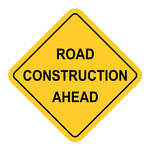CONSERVATION CORNER
A weekly blog for all things conservation
 By: Tim Robson; DGLVR Specialist. In this week’s column we are bring you the second of what will be 4 articles this year, all of which will focus on the different seasons of Municipal maintenance. We will explain what you may see going on in your township and why. After all, in know many of us have wondered why are the doing what they are doing? This of course is a general overview and may very depending on municipality. Everyone does things a little different. I will simply explain the process from my view as a former Road Forman and current Dirt and Gravel Road Specialist here at the Bradford County Conservation District. For this first article we will focus on the upcoming spring maintenance season. Most crews are thinking of or at least hoping to start spring maintenance by April 15th. This of course is dependent upon weather and road conditions and the amount of frost in the road base, which over the winter can really wreak havoc on road systems. One major factor how frost affects the road the spring thaw and how fast it happens. 10” of thawed road material on top of a frozen road base quickly turns into a giant soup bowl.
So, let’s look at the maintenance priorities for spring. First priority: Grading of gravel roads to correct the following issues
These are just some of the challenges faced by your local municipality. I hope this give you a better understanding of the process of maintaining municipal roads. As always, if you happen to come across your local road crew, be sure to tell them thank you for taking care of the roads that take you safely out into the world. The Bradford County Conservation District is committed to helping people manage resources wisely. You can visit the Bradford County Conservation District at 200 Lake Rd in Wysox across from the Wysox Fire Hall. Contact us at (570) 485-3144 or visit our web page at www.bccdpa.com.
0 Comments
Leave a Reply. |
AuthorsVarious staff at the Bradford County Conservation District Archives
July 2024
Categories
All
|
|
Bradford County Conservation District
Stoll Natural Resource Center 200 Lake Road, Suite E | Towanda PA 18848 Phone: (570)-485-3144 |
